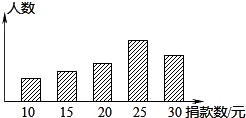Title: Mould on Silk Quilt: Solution and Prevention
Mould on Silk Quilt: Solution and PreventionA silk quilt is a beautiful and expensive item that needs to be taken care of properly. One of the common problems with silk quilts is the growth of mould. Mould can not only damage the silk but also cause health problems. Therefore, it is important to find a solution and take preventive measures.One solution is to use a mild detergent and water to clean the affected area. Another is to apply a disinfectant or antiseptic to kill the mould and bacteria. The third solution is to use a steamer or iron to remove the mould and its spores. However, it is important to note that high temperatures can also damage the silk.To prevent mould growth, it is essential to keep the silk quilt clean and dry. Regularly vacuum or dust it to remove dirt and debris. Avoid storing it in a humid or damp environment, as this provides the perfect conditions for mould to grow. Instead, store it in a well-ventilated, dry place, preferably with some form of protective covering to prevent dust and moisture from settling on it. By following these tips, you can help to protect your silk quilt from mould and ensure its longevity.
"Mould on Silk Quilt: Solution and Prevention" is a topic that many people may have to face at some point. Silk quilts are not just a comfortable bedding option but also a status symbol in many cultures. However, like any other item of clothing or bedding, they are prone to mould growth if not properly cared for.

What Causes Mould on Silk Quilt?
Mould on silk quilts is caused by a combination of factors, including excessive moisture, poor ventilation, and the presence of organic materials that serve as a food source for the mould spores. When these conditions are met, mould can quickly grow and spread on the surface of the silk quilt, causing it to become brittle and weakened.
Solution for Mould on Silk Quilt

If you find mould on your silk quilt, the first step is to take it to a professional dry cleaner or textile conservator. They will use special techniques and agents to remove the mould without damaging the silk fibres. In some cases, they may even be able to restore the quilt to its original condition.
Once the mould has been removed, it is important to take steps to prevent it from recurring. This includes ensuring that the silk quilt is stored in a cool, dry place with good ventilation. Avoid storing it in areas where there is a high level of humidity or where there are organic materials that could serve as a food source for mould spores.
Furthermore, if you live in an area where there is a high level of humidity, you may want to consider investing in a dehumidifier or air conditioner to help reduce the moisture content in the air. This will help to create an environment that is less conducive to mould growth.

Another important step is to regularly inspect your silk quilt for any signs of mould growth. If you find any small patches of mould, you can often remove them yourself by using a diluted vinegar solution or another suitable cleaning agent. However, if the mould growth is more widespread or severe, it is best to seek professional help.
In conclusion, "Mould on Silk Quilt: Solution and Prevention" is a topic that should not be ignored if you own a silk quilt. By understanding the causes of mould growth and taking steps to prevent it from recurring, you can ensure that your silk quilt remains in good condition for many years to come.
Articles related to the knowledge points of this article:
Title: Mastering the Art of Tie Tying: A Comprehensive Guide to Tie Knotting (领带打法图解视频)
Short Womens Jackets: The Ultimate Guide
Long-term evaluation of womens down jackets
Title: Understanding the Price of Real Silk Ties
Title: Creative DIY: Mastering the Art of Silk Scarf Folding



